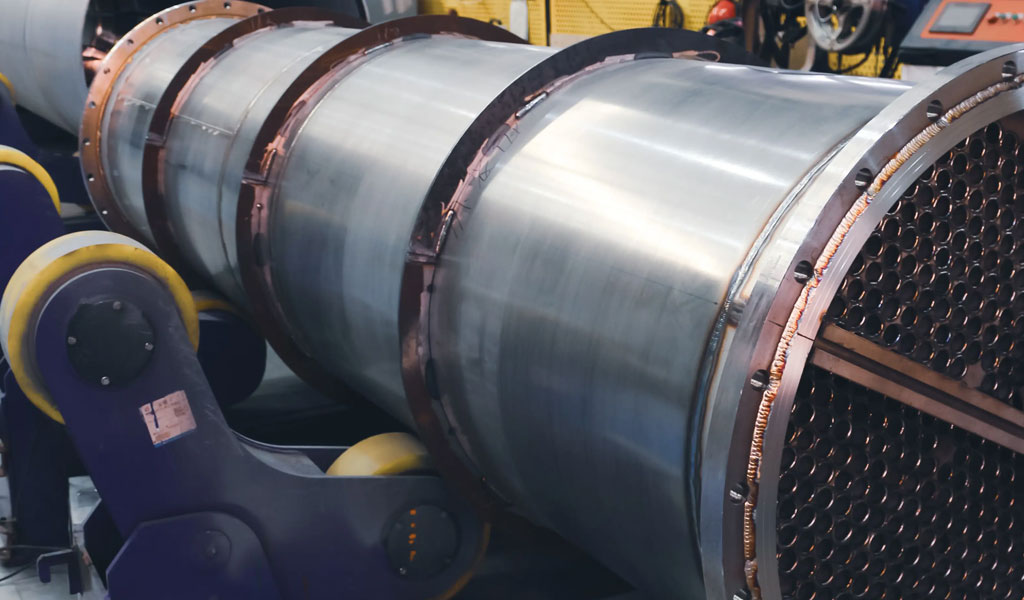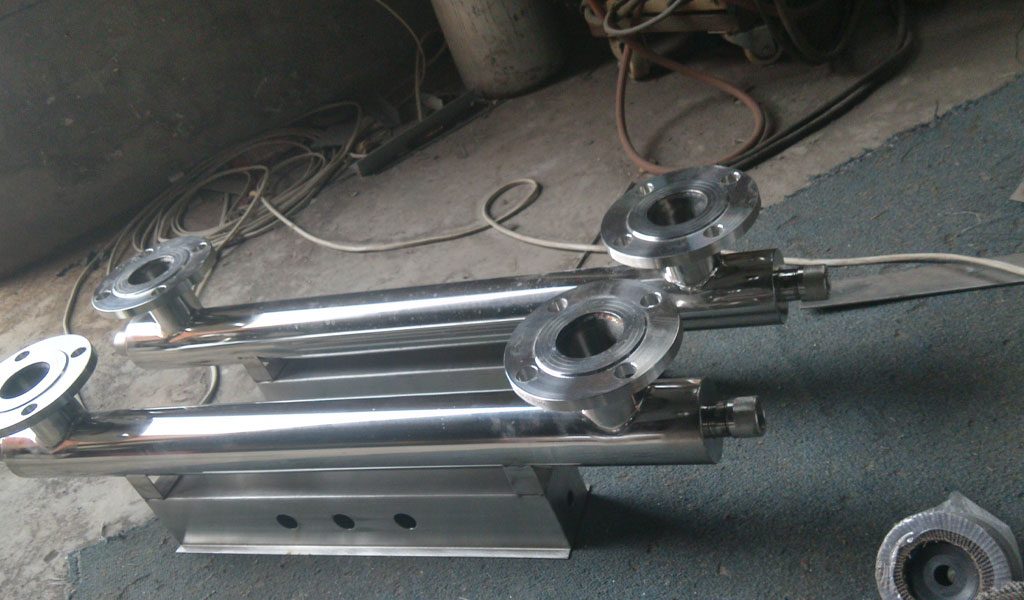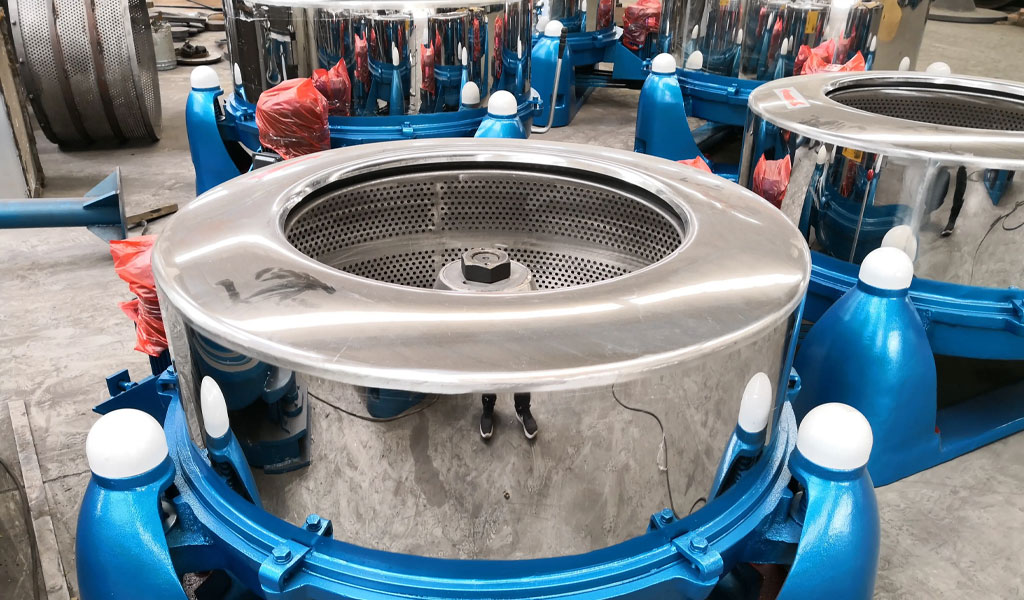Descaling stainless steel is a critical process in various industrial applications to ensure the material’s optimal performance, longevity, and appearance. This process involves the removal of scale, which is a layer of oxide formed on the surface during manufacturing processes like hot rolling, annealing, or welding. Proper descaling enhances the material’s corrosion resistance, prepares it for subsequent finishing treatments, and improves its aesthetic appeal.

What is Stainless Steel Descaling?
The development of stainless steel in the early 20th century revolutionized many industries due to its remarkable resistance to corrosion and staining. However, the presence of scale—primarily composed of iron oxides—posed challenges. Early methods of descaling involved mechanical techniques like wire brushing or sandblasting, but these methods had limitations in terms of efficiency and uniformity. The evolution of chemical descaling processes in the mid-20th century marked a significant advancement, enabling more effective and consistent removal of scale from stainless steel surfaces.
Stainless steel descaling is the process of removing oxide layers, commonly known as scale, from the surface of stainless steel. These oxide layers form during high-temperature processing steps such as hot rolling, annealing, and welding. Descaling is essential to restore the stainless steel’s corrosion resistance, improve its surface finish, and prepare it for further processing or use.
How Scale Forms on Stainless Steel
Scale formation on stainless steel is a complex process that involves the interaction of the steel surface with the environment, particularly at elevated temperatures.
Understanding the mechanisms behind scale formation is essential for developing effective descaling methods and preventing scale-related issues in industrial applications.

Oxidation Reactions
The primary mechanism for scale formation on stainless steel is oxidation. When stainless steel is exposed to high temperatures, the elements in the alloy, particularly iron (Fe), chromium (Cr), and nickel (Ni), react with oxygen in the environment to form oxides. These oxides create a layer, or scale, on the surface of the steel. The most common oxides involved in scale formation are:
Iron Oxides:
- Magnetite (Fe₃O₄): Forms at lower temperatures and has a dark, black appearance.
- Hematite (Fe₂O₃): Forms at higher temperatures and is typically red or brown.
- Chromium Oxide (Cr₂O₃): Provides corrosion resistance but can form a part of the scale layer, especially if the oxide layer becomes thick or if the environment is aggressive.
- Nickel Oxide (NiO): Less common but can form under certain conditions, especially in high-temperature environments.
High-Temperature Processes
Scale formation is particularly prevalent during high-temperature processes such as:
- Hot Rolling: During the hot rolling process, stainless steel is heated to a temperature above its recrystallization point. At these high temperatures, the steel surface reacts with oxygen in the air, forming a thick layer of scale, commonly referred to as mill scale.
- Annealing: Annealing involves heating the stainless steel to a specific temperature and then cooling it slowly to relieve internal stresses and improve ductility. During this process, oxide scales can form on the surface, particularly if the annealing is done in an oxidizing environment.
- Welding: Welding stainless steel involves localized high temperatures that can cause the formation of heat tint or oxidation discoloration around the weld area. This oxide layer can vary in color from light straw to dark blue, depending on the temperature and the exposure time.
Types of Oxide Scales
- Mill Scale : Mill scale is a thick, dense layer of iron oxides formed during the hot rolling process. It is composed mainly of magnetite (Fe₃O₄) and hematite (Fe₂O₃) and adheres strongly to the steel surface. Mill scale is difficult to remove and requires significant mechanical or chemical intervention.
- Heat Tint : Heat tint, also known as weld discoloration, forms during welding or other high-temperature processes. This thin oxide layer results from the localized heating and cooling cycles and can range in color from light yellow to dark blue, depending on the temperature reached. Heat tint is less tenacious than mill scale but can still impair the corrosion resistance of stainless steel if not removed.
- Oxide Scale : Oxide scale forms during annealing and other heat treatment processes. This scale is typically composed of a mixture of chromium, iron, and nickel oxides. The scale formed during these processes can be more chemically stable and harder to remove than heat tint but is usually less thick and adherent than mill scale.
Factors Influencing Scale Formation
Temperature
Temperature is the most critical factor influencing scale formation. Higher temperatures accelerate the oxidation reactions, leading to thicker and more adherent scales. Each type of oxide forms at different temperature ranges, with iron oxides forming at lower temperatures and chromium and nickel oxides forming at higher temperatures.
Atmosphere
The composition of the atmosphere surrounding the stainless steel during processing significantly affects scale formation. Factors such as oxygen concentration, humidity, and the presence of other gases (e.g., carbon dioxide, sulfur dioxide) can influence the type and thickness of the oxide scale.
- Oxidizing Atmospheres: High oxygen concentrations promote the formation of thick oxide scales.
- Reducing Atmospheres: Atmospheres with low oxygen content or the presence of reducing gases (e.g., hydrogen) can limit oxide formation or alter the scale’s composition.
Alloy Composition
The specific composition of the stainless steel alloy affects its oxidation behavior and the types of oxides that form. Higher chromium and nickel content generally improves oxidation resistance but can also lead to the formation of different oxide scales.
- Chromium: Higher chromium content increases the formation of a protective chromium oxide layer, enhancing corrosion resistance but potentially contributing to scale formation at high temperatures.
- Nickel: Nickel can influence the oxidation behavior, particularly in high-temperature environments, and affect the formation of nickel oxides.
Preventing Scale Formation
- Controlled Atmospheres : Using controlled atmospheres during high-temperature processing can significantly reduce scale formation. For example, performing annealing or heat treatment in an inert gas (e.g., argon) or vacuum environment minimizes oxygen exposure and limits oxidation.
- Protective Coatings : Applying protective coatings to the stainless steel surface before high-temperature processing can prevent direct contact with oxygen and other oxidizing agents. These coatings can be temporary (e.g., anti-scale compounds) or permanent (e.g., aluminized coatings).
- Process Modifications : Modifying processing parameters, such as temperature, heating rate, and cooling rate, can influence scale formation. Lowering the processing temperature or optimizing the thermal cycle can reduce the extent of oxidation and scale formation.
Scale formation on stainless steel is primarily a result of high-temperature oxidation reactions involving the alloy elements and oxygen in the environment. The type and severity of scale depend on factors such as temperature, atmosphere, and alloy composition. Understanding these mechanisms and influencing factors is essential for developing effective strategies to prevent and remove scale, ensuring the optimal performance and appearance of stainless steel in various industrial applications.

Methods of Descaling Stainless Steel
Descaling stainless steel involves various techniques to remove oxide scales formed during manufacturing processes such as hot rolling, annealing, or welding.
The choice of method depends on factors like the type of scale, the size and shape of the stainless steel piece, and the desired surface finish. Here, we discuss the primary methods of descaling stainless steel, including mechanical, chemical, and electrolytic processes.
Mechanical Descaling
Mechanical descaling methods physically remove the scale from the stainless steel surface. These techniques are often used for large or heavily scaled surfaces.
Grinding
Grinding involves using abrasive wheels or belts to manually or automatically remove the scale. This method is effective for heavy and adherent scales such as mill scale.
Advantages:
- Effective for thick scales
- Provides a controlled material removal rate
Disadvantages:
- Can cause surface roughness
- Risk of material loss if not properly controlled
- Labor-intensive for manual grinding
Shot Blasting
Shot blasting uses high-speed abrasive particles propelled at the stainless steel surface to dislodge and remove the scale.
Advantages:
Effective for large or irregularly shaped items
Provides a uniform surface finish
Disadvantages:
May not reach intricate details or internal surfaces
Equipment setup and maintenance can be costly
Brushing
Wire brushing employs rotating wire brushes to scrub off the scale, suitable for light scaling or heat tint.
Advantages:
- Simple and cost-effective
- Can be used for localized descaling
Disadvantages:
- Less effective for heavy or tenacious scales
- May not provide a uniform surface finish
Chemical Descaling
Chemical descaling, also known as pickling, involves using acids or other chemicals to dissolve the oxide scales. This method provides a uniform and clean surface and is suitable for complex shapes and internal surfaces.
Acid Pickling
Acid pickling uses solutions of acids to chemically react with and dissolve the oxide scales. Commonly used acids include hydrochloric acid (HCl), sulfuric acid (H₂SO₄), and mixtures of nitric acid (HNO₃) and hydrofluoric acid (HF).
Hydrochloric Acid: Effective for removing iron oxides, often used for carbon steel but can be applied to stainless steel with appropriate inhibitors.
Advantages:
Fast and effective scale removal
Disadvantages:
- Risk of pitting corrosion if not properly controlled
- Hazardous to handle and requires proper safety measures
Sulfuric Acid: Less aggressive than hydrochloric acid, typically heated to enhance effectiveness.
Advantages:
- Suitable for stainless steel
- Lower risk of pitting compared to hydrochloric acid
Disadvantages:
- Requires heating and longer processing times
- Generates hazardous fumes
Nitric Acid and Hydrofluoric Acid Mixtures: Frequently used for stainless steel pickling, effective for removing chromium-rich oxide scales.
Advantages:
- Highly effective for stainless steel
- Provides a clean, passivated surface
Disadvantages:
- Hazardous and corrosive
- Requires careful handling and disposal
Alkaline Cleaning
Alkaline cleaning involves using alkaline solutions, such as sodium hydroxide (NaOH) or potassium hydroxide (KOH), often combined with surfactants to remove the scale.
Advantages:
- Safer than acid pickling
- Can remove oils and greases along with light oxides
Disadvantages:
- Less effective for heavy or thick scales
- May require longer processing times
Electrolytic Descaling
Electrolytic descaling uses an electric current to facilitate the removal of scale. The stainless steel piece acts as an electrode in an electrolytic cell, where the current promotes the dissolution of the oxide layer.
Advantages:
- Precise and controlled descaling
- Effective for complex shapes and internal surfaces
- Minimal mechanical damage to the surface
Disadvantages:
- Higher operational costs
- Requires specialized equipment
- Complex setup and maintenance
Advanced Descaling Methods
Recent advancements in descaling technology aim to improve efficiency, safety, and environmental impact. These include:
Laser Descaling
Laser descaling uses high-energy laser beams to remove scale without the need for chemicals.
Advantages:
- High precision
- Minimal environmental impact
- Can be automated for consistent results
Disadvantages:
- High initial investment
- May be cost-prohibitive for large-scale applications
Ultrasonic Descaling
Ultrasonic descaling employs high-frequency sound waves in a liquid medium to dislodge and remove scale.
Advantages:
- Effective for intricate geometries and hard-to-reach areas
- Gentle on the base material
Disadvantages:
- Requires specialized equipment
- May not be suitable for very large or heavily scaled items
Environmental and Safety Considerations
Descaling processes, particularly chemical descaling, involve significant safety and environmental risks. Proper precautions and waste management practices are essential.
Safety Measures
- Personal Protective Equipment (PPE): Workers should use gloves, goggles, and protective clothing to avoid exposure to hazardous chemicals.
- Ventilation: Adequate ventilation is necessary to prevent the buildup of harmful fumes, particularly in enclosed spaces.
- Chemical Handling and Storage: Proper storage and handling procedures must be followed to prevent spills and accidental exposure. Acids should be stored in corrosion-resistant containers, and neutralizing agents should be readily available.
- Training: Workers must be trained in the safe handling of chemicals, emergency procedures, and the proper use of descaling equipment.
Environmental Impact and Waste Management
The descaling process can generate effluents containing acids, heavy metals, and other contaminants. Proper treatment and disposal of these effluents are necessary to prevent environmental pollution.
- Neutralization: Acidic effluents are neutralized using alkaline substances to prevent environmental harm.
- Precipitation: Heavy metals are precipitated out of the solution using agents such as lime or sodium hydroxide, allowing them to be removed as solid waste.
- Filtration: Solid waste from precipitation processes is filtered out to produce a cleaner effluent.
- Recycling: Whenever possible, chemicals and water are recycled within the process to minimize waste generation.
Descaling stainless steel is a crucial process to maintain its performance, durability, and aesthetic qualities. Various methods, including mechanical, chemical, and electrolytic descaling, are employed based on the type of scale, the size and shape of the steel, and the desired outcome. While traditional methods are widely used, advancements in descaling technology, such as laser and ultrasonic descaling, offer new possibilities for more efficient and environmentally friendly scale removal. Proper safety measures, waste management, and adherence to industry standards are essential for effective and responsible descaling operations.
Preventive Measures to Avert Stainless Steel Scaling
Stainless steel scaling can be a significant problem in various industries, as it can lead to reduced efficiency, contamination, and increased maintenance costs. Here are several preventive measures to avert stainless steel scaling:
Material Selection:
- Choose stainless steel grades with higher chromium and nickel content, such as 304L or 316L, which have better resistance to oxidation and scaling.
- Consider using stainless steel with added elements like molybdenum, silicon, or aluminum that enhance scaling resistance.
Proper Alloying:
Ensure the stainless steel used is properly alloyed to provide optimal scaling resistance under expected operating conditions.
Surface Treatments:
Apply protective coatings such as aluminizing, siliconizing, or ceramic coatings to create a barrier that prevents scaling.
Use surface treatments like passivation or pickling to remove contaminants and improve the natural oxide layer of stainless steel.
Control of Environmental Conditions:
Minimize exposure to high temperatures by optimizing operating conditions to stay within the safe temperature range of the stainless steel grade used.
Reduce the presence of oxidizing agents in the environment, such as oxygen and sulfur compounds, which can accelerate scaling.
Regular Cleaning and Maintenance:
Implement regular cleaning schedules to remove any buildup of contaminants that could contribute to scaling.
Use appropriate cleaning agents that do not damage the stainless steel surface.
Proper Design:
Design equipment to avoid sharp corners, crevices, and areas where scaling is likely to initiate and propagate.
Ensure good ventilation and cooling systems to prevent localized overheating.
Process Control:
Monitor and control process parameters such as temperature, pressure, and flow rates to minimize conditions that promote scaling.
Implement real-time monitoring systems to detect early signs of scaling and allow for immediate corrective actions.
Chemical Inhibitors:
Use chemical inhibitors in processes to reduce the rate of oxidation and scaling.
Select inhibitors compatible with the stainless steel grade and the specific process environment.
Heat Treatment:
Use proper heat treatment techniques, such as annealing and quenching, to relieve internal stresses and reduce scaling potential.
Avoid prolonged exposure to high temperatures during heat treatment processes.
Water Quality Management:
Ensure the water used in processes is of high quality, free from contaminants that can cause scaling, such as chlorine, sulfur, and other corrosive elements.
Use water treatment methods like deionization, reverse osmosis, or filtration to maintain water purity.
By implementing these measures, industries can significantly reduce the risk of stainless steel scaling, leading to longer equipment life, improved performance, and lower maintenance costs.
Safety Precautions to Observe When Descaling Stainless Steel
Descaling stainless steel involves the removal of oxide scales and other impurities from the metal surface.
The process can involve the use of strong acids, mechanical methods, or other chemical treatments, which can pose safety risks. Here are important safety precautions to observe when descaling stainless steel:

Personal Protective Equipment
- Gloves:Wear chemical-resistant gloves (e.g., nitrile, neoprene) to protect your hands from acids and other chemicals.
- Eye Protection:Use safety goggles or face shields to protect your eyes from splashes.
- Respiratory Protection:Use appropriate respirators if fumes, dust, or vapors are present. Ensure proper ventilation in the working area.
- Protective Clothing:Wear long-sleeved chemical-resistant clothing, aprons, and steel-toed boots to protect your skin and feet.
Handling Chemicals
- Material Safety Data Sheets (MSDS):Review the MSDS for all chemicals being used to understand their hazards and first aid measures.
- Proper Labeling:Ensure all chemical containers are properly labeled with their contents and hazard warnings.
- Mixing Chemicals:Always add acid to water, not water to acid, to prevent exothermic reactions that can cause splashing.
- Storage:Store chemicals in a cool, dry place away from incompatible materials and out of reach of unauthorized personnel.
Working Environment
- Ventilation:Ensure adequate ventilation or use fume hoods to dissipate harmful vapors and fumes.
- Spill Management:Have spill kits and neutralizing agents readily available to manage accidental spills promptly and safely.
- Emergency Equipment:Ensure eyewash stations, safety showers, and fire extinguishers are accessible and in good working order.
Process Safety
- Equipment Check:Inspect all equipment and tools for integrity and suitability before starting the descaling process.
- Containment:Use containment methods such as drip pans or barriers to prevent the spread of chemicals.
- Temperature Control:Monitor and control the temperature of chemical baths to avoid overheating and potential reactions.
Handling Descaled Material
- Rinsing:Thoroughly rinse descaled stainless steel with water to remove any residual acids or chemicals.
- Neutralization:Neutralize acidic residues with appropriate neutralizing agents before disposal.
- Drying:Ensure the stainless steel is properly dried to prevent corrosion or further oxidation.
Waste Disposal
- Chemical Waste:Dispose of chemical waste according to local regulations and environmental guidelines.
- Used PPE:Treat used PPE and other contaminated materials as hazardous waste and dispose of them accordingly.
Training and Procedures
- Training:Ensure all personnel involved in descaling operations are trained in safe handling procedures and emergency response.
- Standard Operating Procedures (SOPs):Develop and follow detailed SOPs for descaling processes, including safety measures and emergency procedures.
By adhering to these safety precautions, the risks associated with descaling stainless steel can be minimized, ensuring a safer working environment for all personnel involved.
